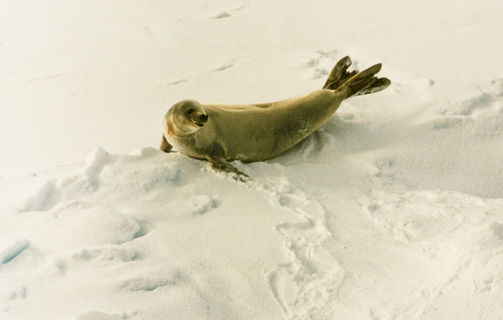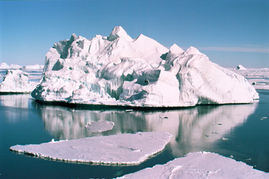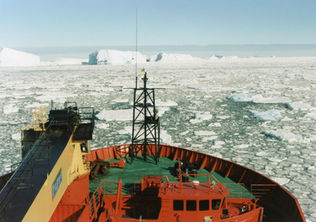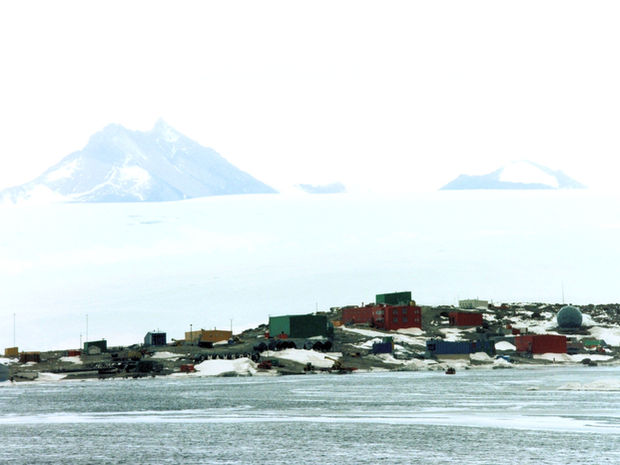
Antarctica ~ A True Wilderness
While Antarctica is not a part of Tasmanian, the headquarters of the Australian Antarctic program is located in Kingston, about a 15-minute drive south of Hobart.
Given that Antarctica is one of Earth’s last true wildernesses and people's great interest in this special place, I have included Antarctica on the Tasmanian website.
Antarctica is a remote location, the frozen landscape ensures a tiny human footprint, and the environmental management programs help to maintain the pristine ecosystem.
Did you know?
Antarctica, on average, is the coldest, driest, and windiest continent and has the highest average elevation of all the continents.
It is the fifth-largest continent and nearly twice the size of Australia.
It is the least densely populated continent at 0.00008 people per square kilometre. Australia is 3.14, and Europe is 34.
How cold can it be in Antarctica?
The average annual temperature ranges from about −10°C on the Antarctic coast to −60°C at the highest parts of the interior.
Near the coast, the temperature can exceed +10°C in summer and fall to below −40°C in winter.
Vostok in Antarctica is the coldest place on the Earth, with the lowest temperature recorded as -89.2°C.









Antarctic Wildlife
Antarctic wildlife includes whales, seals, penguins, birds, krill, squid, and fish.
Whales
Many Southern Ocean whales are migratory, heading to tropical waters during the Antarctic winter.
Some whale species living in the Antarctic Ocean include:
Southern Right, Blue, Sei, Humpback, Minke, Fin, Sperm, Orca and Southern Bottlenose Whales.
The magnificent blue whale can grow up to 24 metres and weigh 84 tonnes.
Krill is the primary whale food. Massive swarms of krill, a tiny micro-shrimp in the Antarctic Ocean, provide the principal food for blue whales – the largest animal that ever lived.
Seals
Six different species of seal live in Antarctic waters: Ross, Weddell, crabeater, leopard, fur and elephant seals.
Four of these species are ice-habitat specialists; the Leopard and Ross seals tend to be solitary, whereas Weddell and crabeater seals form breeding groups or colonies.
Seals spend much of their time under the sea ice in Antarctica, as it is relatively 'warm’ compared to the cold air temperature.
The water temperature varies from only -1.8 to 1ºC around Antarctica.
Fur seals are the smallest, with adult females weighing only 150kg, while male elephant seals can weigh 4,000 kg.
Penguins
Penguins are the most common birds of Antarctica, living in colonies with populations larger than some cities and surviving in the harshest conditions.
Of the 17 species of penguin, only two (Emperor and Adélie) are true Antarctic birds.
Other penguins, namely the Chinstrap, Gentoo and Macaroni, breed on the northern tip of the Antarctic Peninsula, where conditions are less harsh.
Antarctic Bird Life
Albatrosses, Shearwaters, Petrels, Storm-Petrels, Diving petrels, Cormorants, Bitterns, Herons, Egrets, Ducks, Geese, Swans, Sheathbills, Skuas, Jaegers, Gulls and Terns are found in the Antarctic.









Icebergs
An iceberg is a massive piece of ice of varying shapes, protruding more than five metres above sea level.
The majority of the iceberg (around 90%) is unseen as it is underwater.
Icebergs form when they break away from a glacier
Icebergs may be afloat or aground.
The Largest Iceberg
Iceberg B-15 was the world's largest recorded iceberg, which calved from the Ross Ice Shelf of Antarctica in March 2000.
It measured around 295 kilometres long and 37 kilometres wide, with a surface area of 11,000 square kilometres.
Over five years, B-15 broke into smaller icebergs that floated north away from the Ross Sea.


























Antarctic Ice
About 98% of Antarctica is covered by ice, which extends to all but the northernmost reaches of the Antarctic Peninsula.
The continent has about 90% of the world's ice (and about 70% of the world's freshwater.
The average thickness is 1.9 km.
The most significant recorded ice thickness is nearly five kilometres, measured in Wilkes Land, eastern Antarctica, by echo soundings.
If all of this ice were melted, sea levels would rise about 60 metres
And it is estimated that the landmass of the Antarctic Continent would rise about 100 metres
How windy is it in Antarctica?
Antarctica has frigid, dense air that flows down from elevated areas and is replaced by air from above.
These are called katabatic winds, and they accelerate downhill.
Low-pressure systems near the Antarctic coast can interact with katabatic winds to increase their wind speeds to around 100km/h for several days.
Wind gusts well over 200km/h have been measured.




Australia has three stations on the Antarctic continent.
The stations are Casey, Davis and Mawson.













